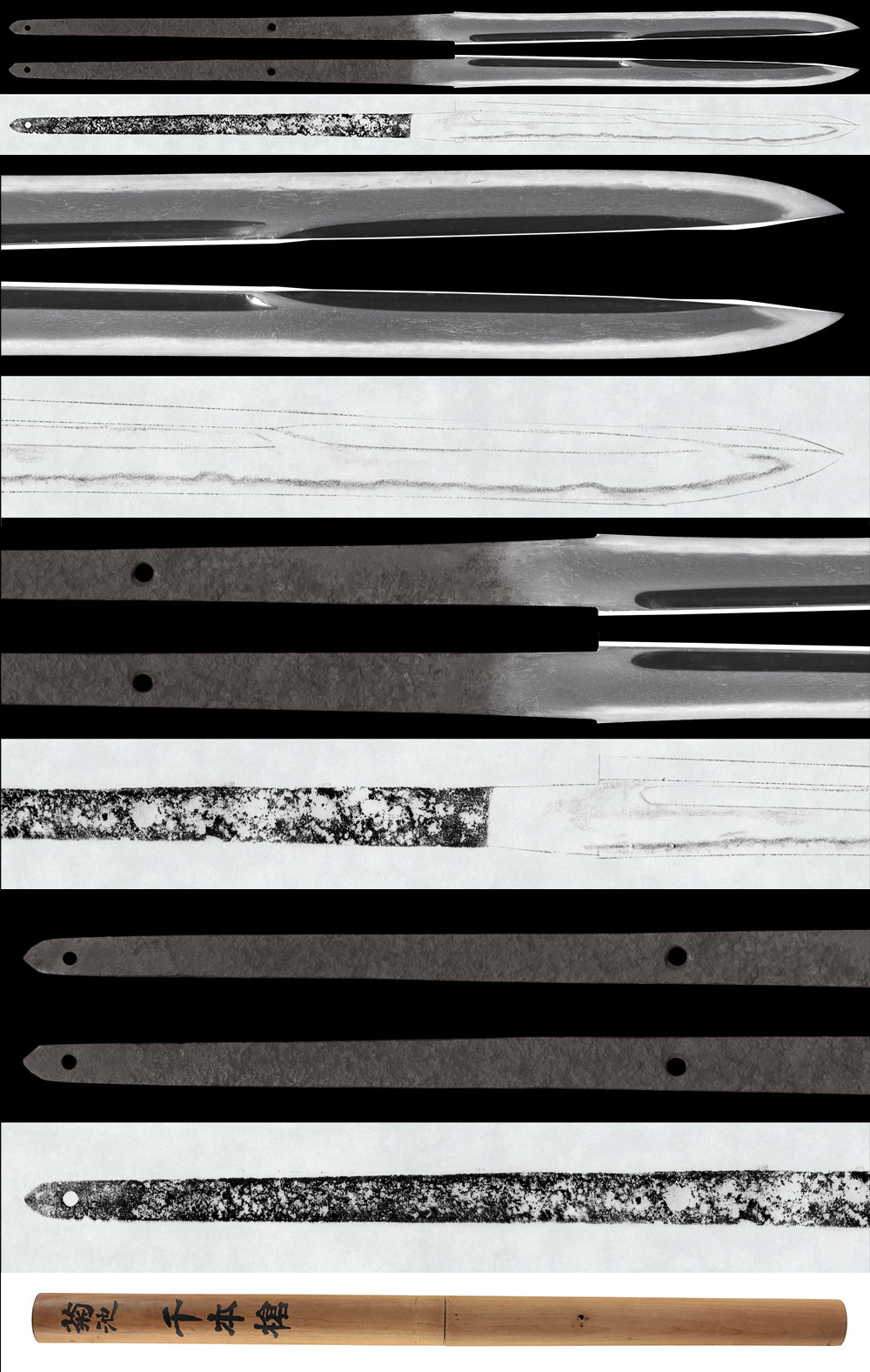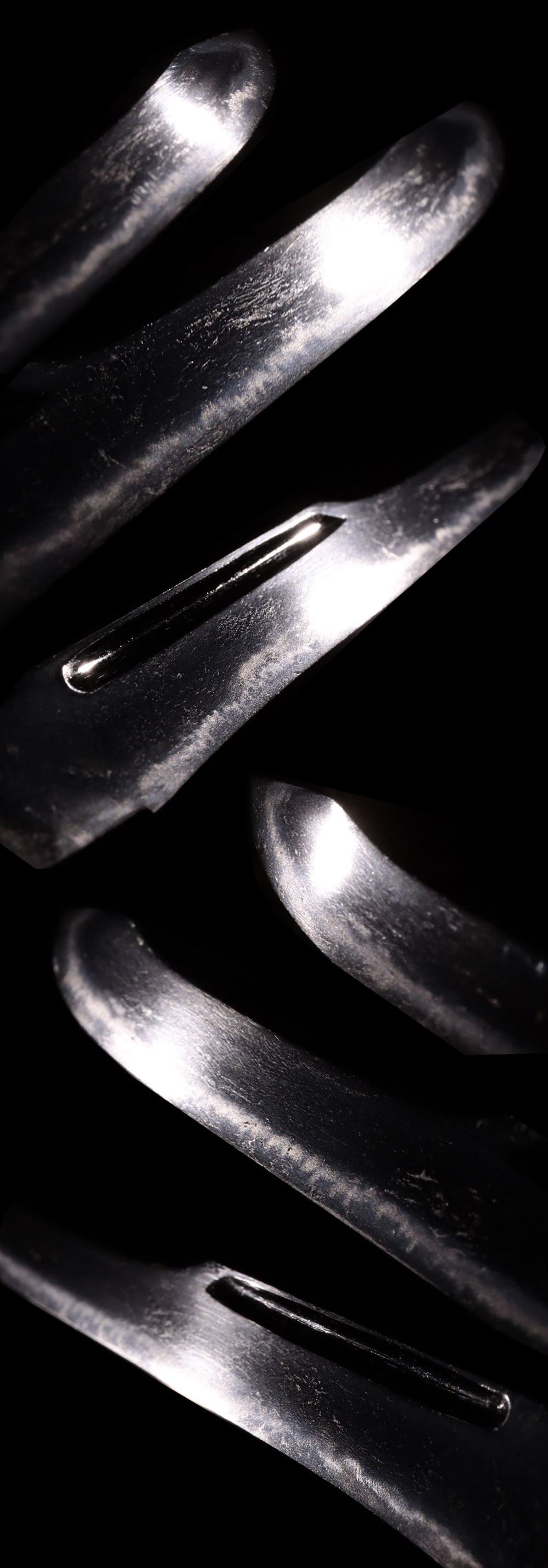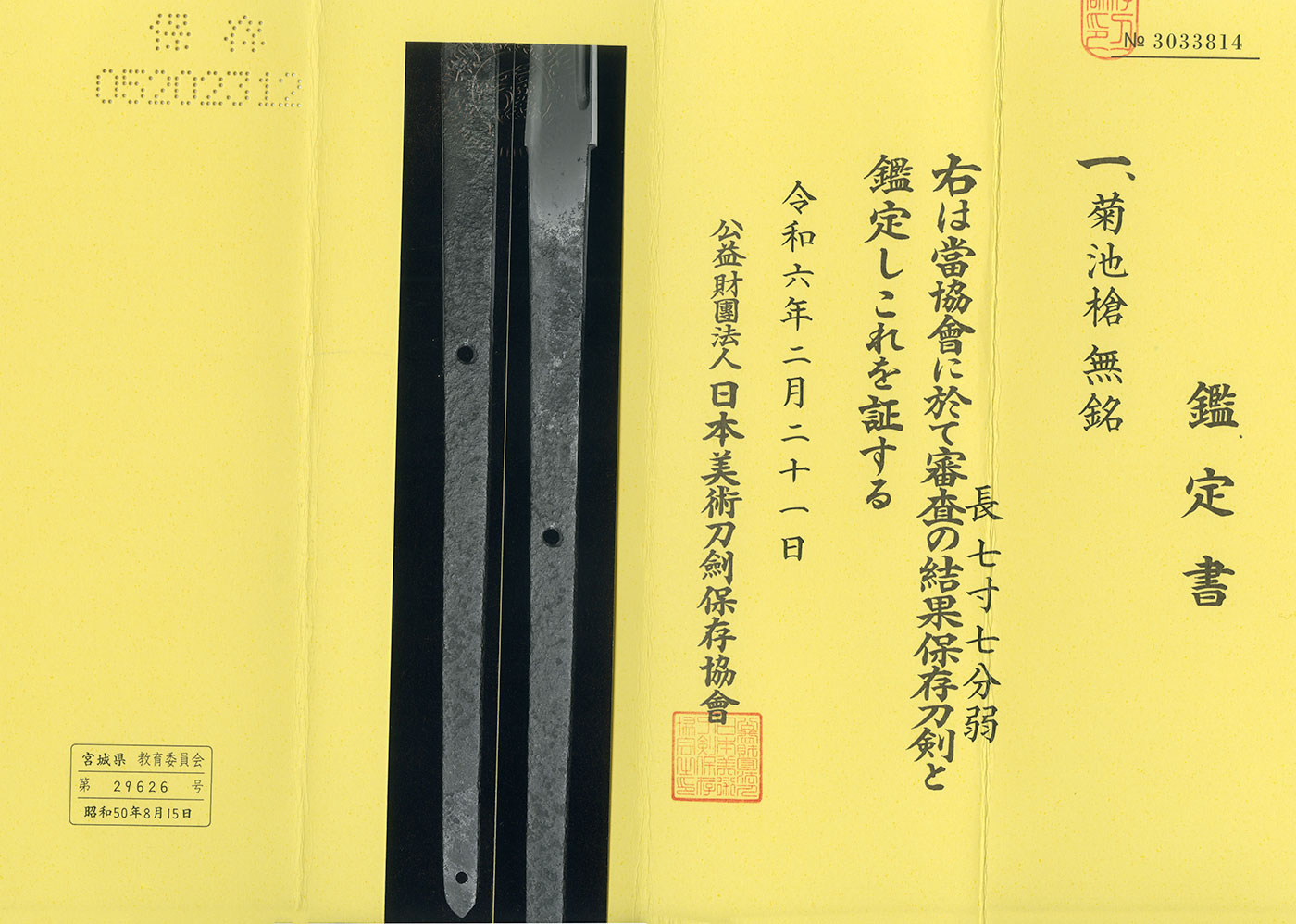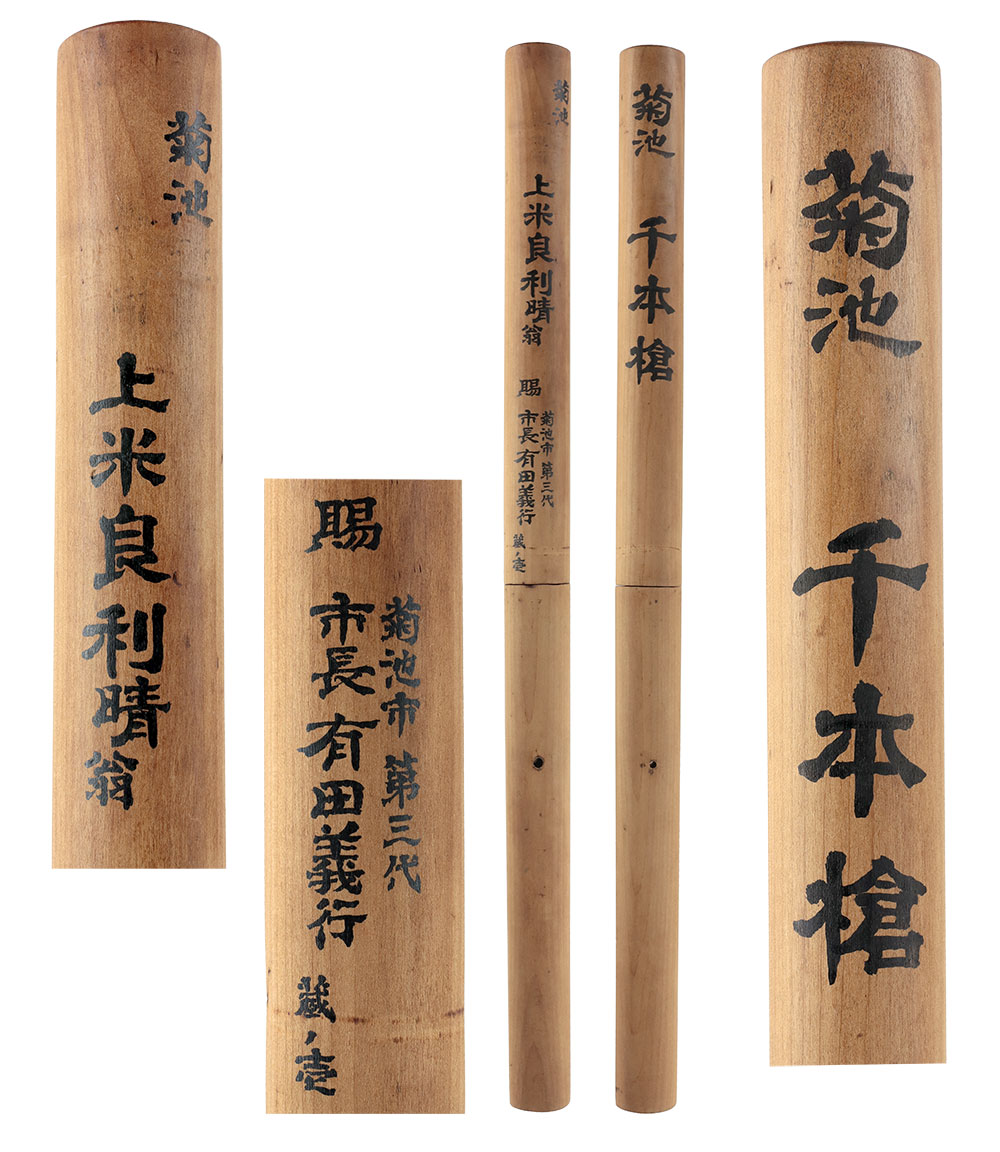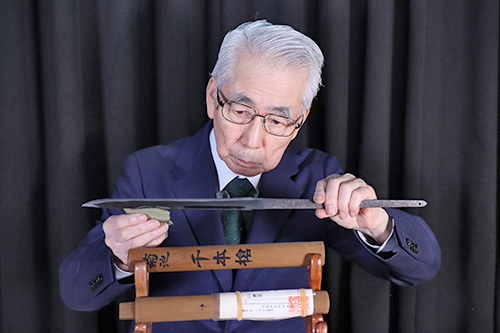Ordering Number: 23473
Tanto: In Shirasaya (NBTHK Hozon Token)
Signature: Mumei (Unsigned) (Kikuchi Yari)
We divide 4 sections for each sword as Saijyo Saku, Jyojyo Saku, Jyo Saku, and Regular Saku. This piece is ranked as Jyo Saku among Mumei (Kikuchi Yari) works.
Blade Length: 23.3 cm (9.17 in)
Curvature: 0.1 cm (0.04 in)
Mekugi Hole: 2
Width at Base (Motohaba): 1.77 cm (0.7 in)
Thickness (Kasane): 0.93 cm (0.37 in)
Sword Weight: 215 g
Era: Nanbokucho Period
Shape: Narrow and thick tanto, the Shinogi-ji in the upper half has been partially cut off, which appears as a neckline when viewed from the side. This is a characteristic shape of the Kikuchi spear.
Jigane: Ko-itame hada with Moku
Hamon: Niedeki suguha with many Ashi. Boshi is rounded.
Features: The Kikuchi clan, active in Higo during the Nanbokucho period, invented the idea of tying a short sword to a long bamboo pole and using it like a spear, and had the swordsmiths of the Enju school, who served for Kikuchi family, make tanto called Kikuchi yari(spear). Until the Kamakura period, fighting was conducted individually and the long-handled weapon was the naginata, but when the form of warfare changed to group battles in the Nanbokucho period, the spear was invented as a long-handled weapon for group battles. In the Muromachi period, spears began to be made in earnest, and the Kikuchi spear was no longer made.
Aoi Art’s Comment: There are multiple small Kizu throughout, but they are unavoidable as this is actual battle weapons. Rather, the condition is relatively good, The blade pattern is blurred but has many ashi and complex changes. It is a romantic piece with a history as a weapon.
NBTHK Hozon Paper
Aoi Art Estimation Paper
Whole Oshigata
Price:350,000JPY
Order Form
Related Items:
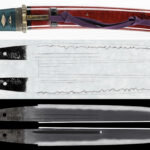 Tanto: Ichi Chounsai Tsunatoshi (2nd Generation)(NBTHK Tokubetsu Hozon Token)
Tanto: Ichi Chounsai Tsunatoshi (2nd Generation)(NBTHK Tokubetsu Hozon Token)
 Tanto:Oite Tokyo Uzawa Oumi Suke Minamoto Taneaki Saku(NBTHK Tokubetsu Hozon Token)
Tanto:Oite Tokyo Uzawa Oumi Suke Minamoto Taneaki Saku(NBTHK Tokubetsu Hozon Token)
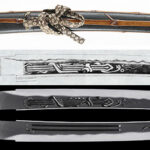 Tanto:Seiryuken Moritoshi(NBTHK Tokubetsu Hozon Token)(Koshirae: NBTHK Tokubetsu Hozon Tosogu)
Tanto:Seiryuken Moritoshi(NBTHK Tokubetsu Hozon Token)(Koshirae: NBTHK Tokubetsu Hozon Tosogu)
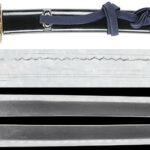 Tanto: Mumei (Jumyo)(NBTHK Hozon Token)
Tanto: Mumei (Jumyo)(NBTHK Hozon Token)
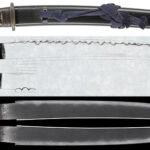 Wakizashi (Sunnobi Tanto) : Sakuyo Gohara Ju Nobushige(March 1859)(NBTHK Hozon Token)
Wakizashi (Sunnobi Tanto) : Sakuyo Gohara Ju Nobushige(March 1859)(NBTHK Hozon Token)
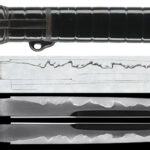 Tanto: Sukenobu(Yokoyama Sukenobu)(NBTHK Hozon Token)
Tanto: Sukenobu(Yokoyama Sukenobu)(NBTHK Hozon Token)

